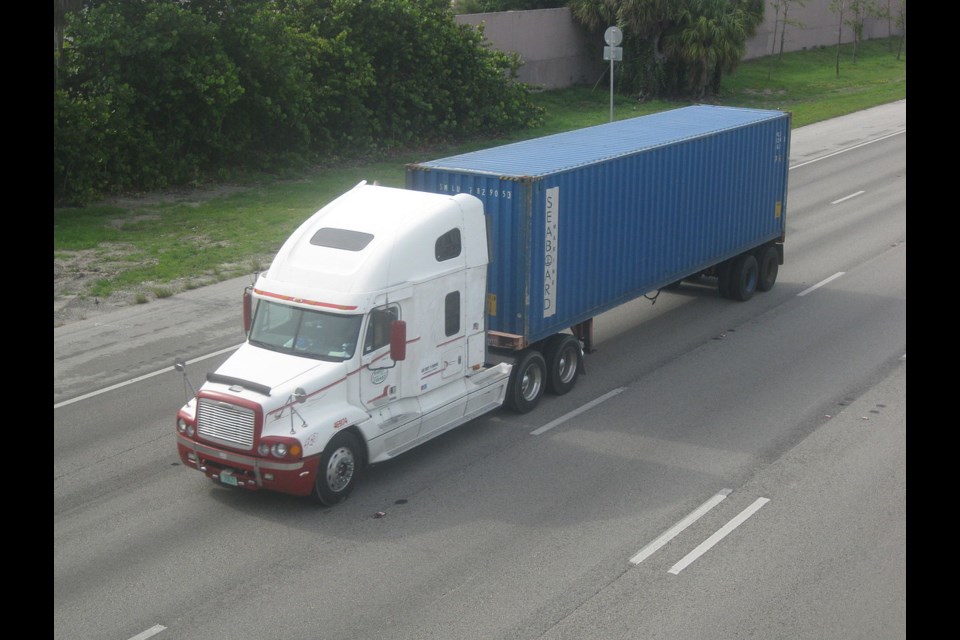A truck shortcut off the highway on Ferry Avenue will remain open for their use after a report found the route wasn't overused.
City council listened to a staff recommendation for the status quo - plus new signage - after a report said using Highways 16 and 97 rather than the Queensway exit could increase travel time and congestion.
Enforcement would be difficult without increasing bylaw services, Dave Dyer, the city's engineering general manager, told council Monday.
The Ferry Avenue-Queensway corridor is considered a key arterial road connecting the downtown to the west bowl. An arterial road typically handles high traffic volumes of between 5,000 to 30,000 vehicles per day.
Usually that amount of traffic would be on a four-lane highway, but Ferry Avenue narrows to two lanes east of Highway 16.
A city count found between 8,000 and 10,000 vehicles travelled daily along Ferry Avenue from Highway 97 South to Highway 16 West.
Up to 20 per cent of that traffic can be attributed to trucks, said staff, citing Transportation Association of Canada recommendations.
The numbers didn't justify the ban, a staff report suggested. It found trucks represented less than three per cent of the total traffic volume during all time periods.

Instead, staff will look into adding signs, but not the signs banning the vehicles that one resident asked for.
"There is absolutely no viable reason for these heavy trucks to be driving down Ferry Avenue other (than) to use it as a shortcut," wrote Gordon Bliss in August last year. His email seems to have kicked off council's request for the trucking report.
"From loaded logging trucks, empty chip trucks, some dangerous good trucks and other cartage carriers using their jake brakes at all hours of the day and night, causing excess dust, sometimes speeding, damaging the pavement and polluting the air with their exhaust, this situation is becoming unbearable," Bliss said.
Council heard there are some signs along the roads, but further away from the off-ramps where they wouldn't get the attention of truck drivers.
"If we're going to limit the traffic, where are we going to send it and whether we're prepared to look at bridging around the city or a bypass," said Coun. Frank Everett.
Even though upgrades may cost millions, Coun. Albert Koehler said the city needs to be looking to the future.
"If we grow as a city somehow we have to look at the bottlenecks that are there at Peden Hill and these other intersections and we have to extend the boundary which is now going east," he said.
Dyer said the city already is working with a consultant after receiving a federal government Asia-Pacific grant. That's at the preliminary concept study stage, he said.
Coun. Jillian Merrick asked about controlled lights at Upland Street and Lansdowne Road.
"We definitely have recognized that's an issue and Ministry (of Transportation) as well is concerned as well about Ferry and Highway 16 intersection. We definitely need to get together with them to discuss that," said Dyer, noting the city has another project in the capital plan that's still a few years out looking at the intersection. It will take some land acquisition, though.
While the city doesn't have a truck route plan or bylaw, it is listed as a proposed project for 2017 as part of the 2016-2020 Capital Financial Plans. Currently some of the traffic is governed through a dangerous goods bylaw, council heard.
"The idea is to identify truck routes and signage would go up," Dyer said.
"We would identify once and for all truck routes in the city."



